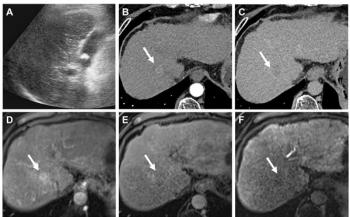
PACS and mobile CT take on SARS in Singapore
PACS and a remote reading strategy were used to isolate SARS patients while allowing them to be imaged with a mobile CT scanner in a program rolled out in Singapore. Dr. C.C. Tchoyoson Lim, a consultant neuroradiologist at the National Neuroscience
PACS and a remote reading strategy were used to isolate SARS patients while allowing them to be imaged with a mobile CT scanner in a program rolled out in Singapore.
Dr. C.C. Tchoyoson Lim, a consultant neuroradiologist at the National Neuroscience Institute, said the experience suggests it is feasible to use mobile CT combined with PACS in a serious outbreak requiring strict isolation procedures. The experience could prove useful in the future to radiology departments that may face similar situations, such as SARS or the bird flu outbreak in Southeast Asia.
Lim and colleagues divided hospital inpatients into confirmed/probable SARS and non-SARS groups. The former were housed in SARS isolation wards.
The main radiology department continued providing service for non-SARS patients but was closed to SARS patients. The hospital deployed a mobile CT scanner (Tomoscan M, Philips Medical Systems) in an isolation intensive care ward used exclusively for SARS patients.
The department carried out strict barrier nursing during all scans, then disinfected the CT scanner after each use with HAZ-TAB 5000 ppm and sodium dichloroisocyanourate 25 g in 3 L.
In the initial two weeks of mobile CT service, five head, eight abdomen, and five thorax studies were performed, including four studies for suspected pulmonary embolism.
"All patients tolerated their studies without incident, and there were no failed studies due to patient movement," Lim said.
All studies were sent to PACS (Pathspeed 8.12, GE Medical Systems) on the hospital local area network and read remotely from workstations. Images and reports were also available on SARS ward computers via Web browser, minimizing physical contact.
Feedback from referring clinicians was overwhelmingly positive, Lim said.
Extraordinary precautions were also invoked to protect the radiology staff. Everyone wore full personal protective equipment, including M95 mask, gloves, gown, and goggles. Radiology staff donned positive pressure ventilation hoods for extreme risk patients.
As an added safety measure, technicians remained in isolation at home, separated from the rest of the "clean" radiology department, and came to work only when cases were scheduled.
"I'm not aware of anyone addressing how techs and clerks - who did not sign up for life-threatening duty - respond emotionally or psychologically," Lim said. "Our experience was that high morale and professionalism in the team before the crisis meant getting the job done when it was fourth and goal."
Newsletter
Stay at the forefront of radiology with the Diagnostic Imaging newsletter, delivering the latest news, clinical insights, and imaging advancements for today’s radiologists.




























